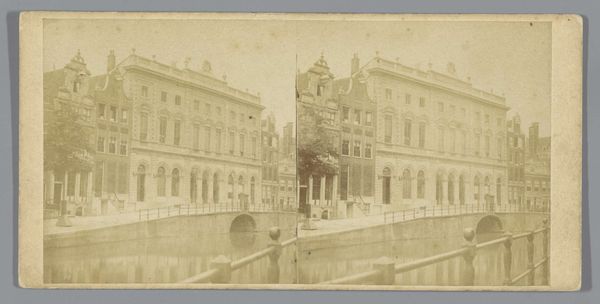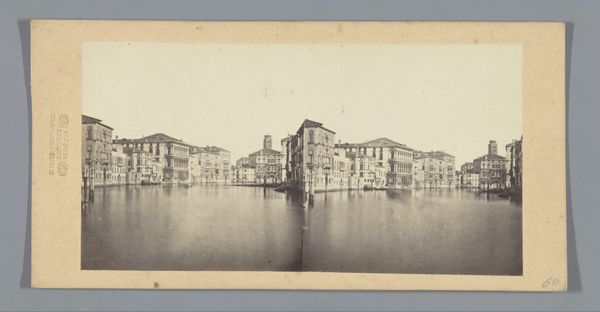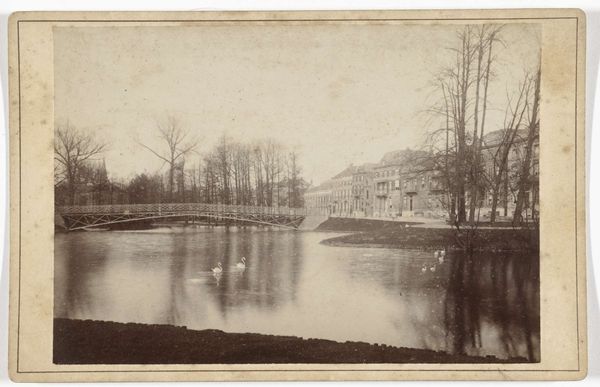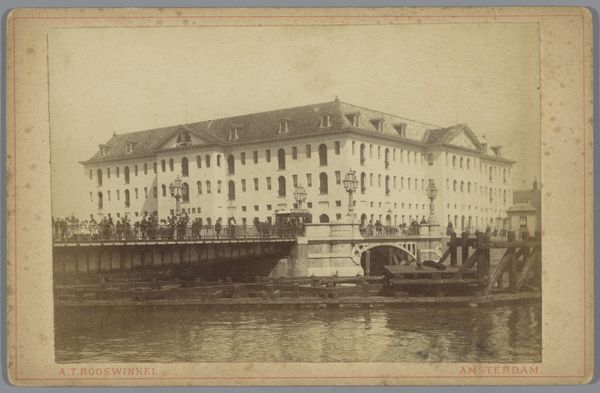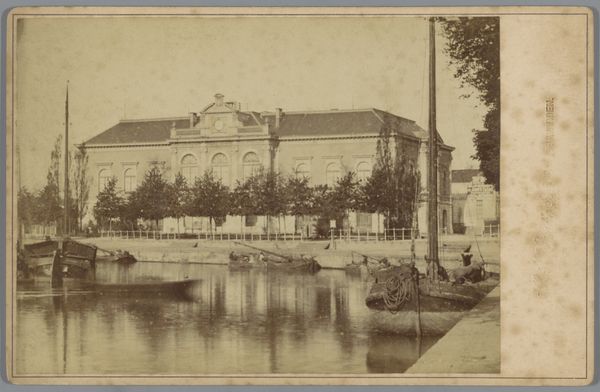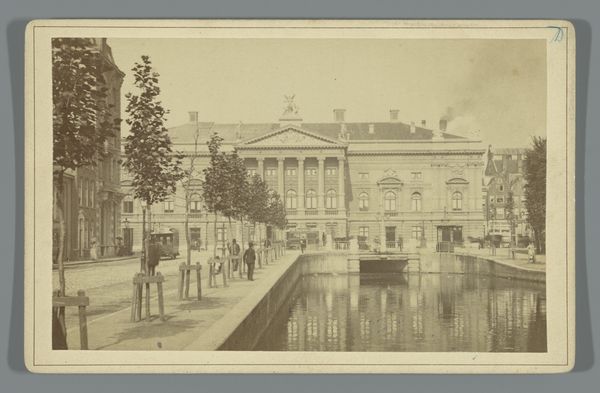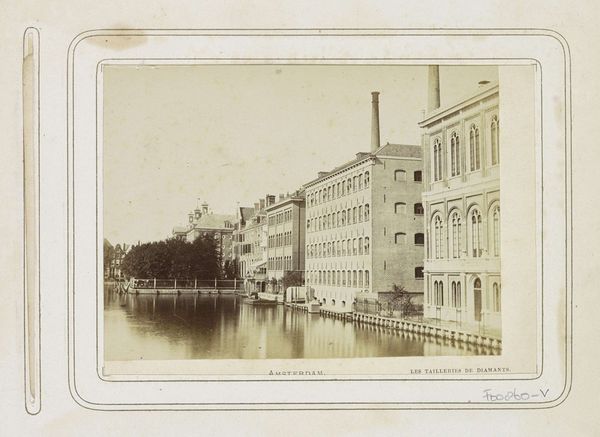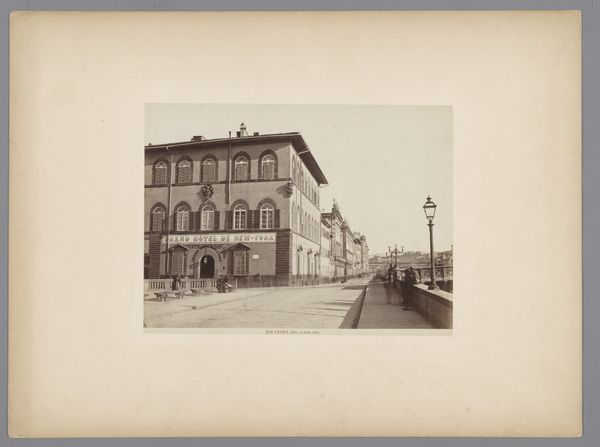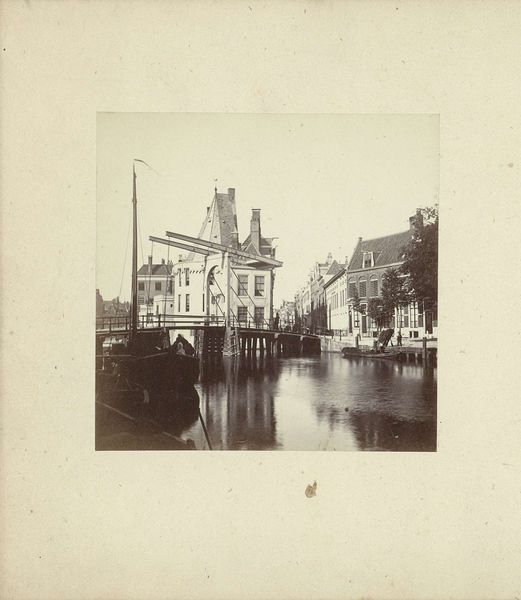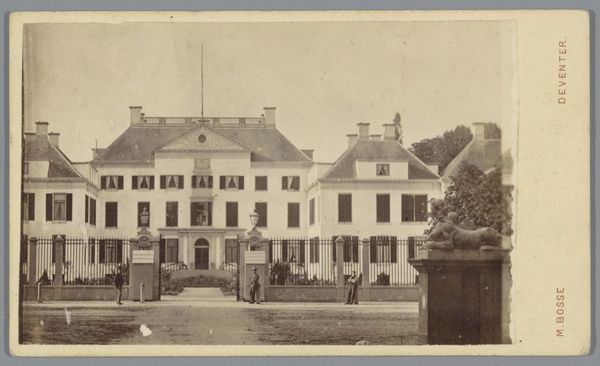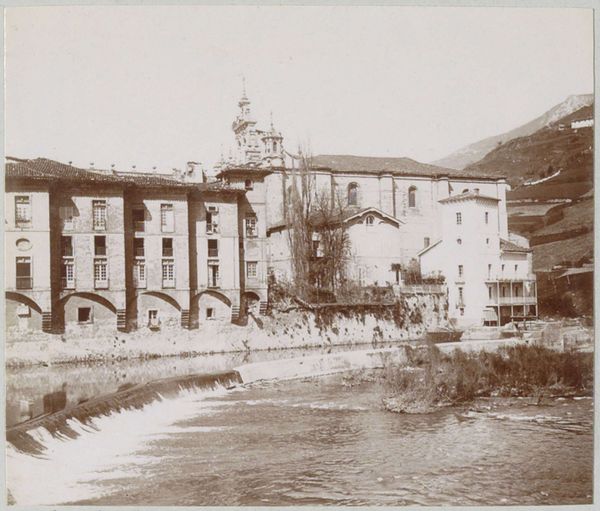
Dimensions: height 98 mm, width 145 mm, height 108 mm, width 165 mm
Copyright: Rijks Museum: Open Domain
Curator: What we have here is a gelatin silver print entitled "Eusebius Buitensingel te Arnhem," dating from between 1860 and 1890, by J.S.J. de Jongh. Editor: It's strikingly still. The sepia tones lend a certain dreamlike quality to what appears to be a very proper, well-ordered cityscape. It gives off a feeling of serene stability. Curator: Indeed, Jongh has captured a moment of burgeoning urban life. This Buitensingel, now known as the Eusebiusbinnensingel, represents Arnhem’s growth, reflecting broader 19th-century urban developments shaped by industrialization and shifting social landscapes. It almost functions as a sort of city portrait, in line with Pictorialist aesthetics of the era. Editor: Absolutely. And the very crisp depiction of the bridge juxtaposed against the softer rendering of the buildings and the water makes you consider who exactly had access to this kind of serene, picturesque life, when considering class dynamics within Arnhem. Curator: Good point. And thinking about accessibility, photography itself was transforming during this period. No longer just for the elite, the gelatin silver process allowed for greater reproducibility and a wider circulation of images, changing how people viewed their cities and the world. The image as a symbol was no longer constrained, in this way. Editor: That’s a powerful notion. These images both shaped and reflected the values of the rising middle classes, with an emphasis on order and progress, even as industrialization caused greater inequities. Also, I find the subdued color palette interesting: this monochrome allows the texture of both stone and water to truly become characters in the depiction of place. Curator: And look closer at the composition. The bridge draws the eye directly to the buildings and their reflection in the water, thereby creating a sense of depth and a mirroring effect—it almost suggests that the city exists both above and below. The bridge in the center symbolizes that, literally acting as a connection. Editor: It almost invites a re-examination of whose stories get mirrored or suppressed within the photographic canon, don't you think? Whose narratives reflect upon these calm waters and are truly visible within this moment? Curator: That's an astute and urgent question, isn't it? Something to be constantly considering, I think. Editor: Definitely a viewpoint to carry.
Comments
No comments
Be the first to comment and join the conversation on the ultimate creative platform.
